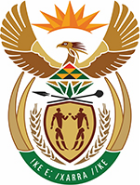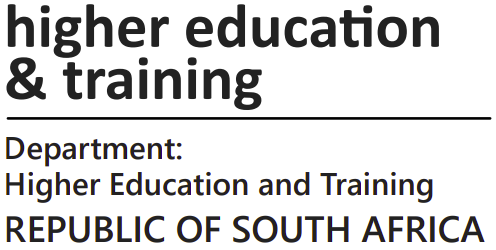Find research > Output by person as author
DHET Colloquium on NQF: Quick feedback on preliminary findings >
This briefing supplies feedback on the preliminary findings of the DHET Colloquium on NQF held on 12 September 2017. It highlights the need for an assessment of programme delivery, strategies, procedures and processes and an assessment of policy/prog...
NQF governance: DHET colloquium on NQF >
This presentation focuses on the following topics: the DHET/NQFA implementation evaluation; working definitions of corporate governance (King IV's broader context) and common sense; key characteristic of good governance; governance framework; governa...
Skills transfer in municipalities in South Africa >
This study focused on skills transfer in local government with specific reference to South Africa. The terms of reference for the study are: To develop a concept document on skills transfer in the workplace focusing on capacity-building programmes, c...
The main objective of the project was to scope and consider the feasibility of institutionalising tracer studies relating to WPBL programmes. The report engages with this objective in the following ways: Firstly, it evaluates tracer-type research int...
From matric into and through university: Higher Education access and outcomes in South Africa >
This presentation covers a national representative quantitative analysis of transitions from school to university (Access), how matric results, demographics, and school background influence university outcomes, and how students progress through the p...
This presentation discusses the following topics: Project background, project context and research outputs; the context of why, how and what? Why does SA have so few graduates? Measuring university outcomes for the 2008 NSC cohort; why delayed univer...
Higher education access and outcomes for the 2008 national matric cohort >
This study uses a unique data set to investigate university access, throughput and dropout for the 2008 national matric cohort. The findings show that university access in South Africa is limited, even among learners who perform relatively well in ma...
Barriers and bottlenecks: Understanding youth transitions in the post-compulsory phase of school >
This presentation addresses the following topics: Throughput rate of learners to Grade 12 is of concern - Increasingly staggered progression as learners move through school; High and growing level of unemployment amongst youth population - 60% of une...
Smooth, staggered or stopped? Educational transitions in SAYPS >
This presentation introduces the Labour Market Intelligence Partnership (LMIP). It then supplies an overview of the South African Youth Panel Study (SAYPS) Report which analyses the characteristics of learners making different transitions and explore...
Smooth, staggered or stopped? Educational transitions in the South African Youth Panel Study >
This report uses the South African Youth Panel Study (SAYPS) - a longitudinal panel study - to follow Grade 9 learners who participated in the Trends in International Mathematics and Science Study (TIMSS) in order to explore the educational transitio...
Smooth, staggered or stopped? Educational transitions in the South African Youth Panel Study >
The South African Youth Panel Study (SAYPS) followed Grade 9 learners who participated in TIMSS 2011 over four consecutive years, in order to explore the educational transitions of young people. The study found that: South African learners follow one...
CHIETA's credible mechanism for skills planning: Presentation to LMIP Roundtable >
This presentation highlights the following topics: why the new online skills planning platform is needed; conceptualising and developing the credible mechanism for online skills planning and reporting; online system supports compliance requirements;...
Critical review of the research on skills development in rural areas >
This paper aims to answer the following two overarching questions: what do we know about rural skills development in South Africa? What are key research challenges (conceptual, policy and methodological) to address as a first step to overcome the cou...
International Labour Organisation: Future of Work Initiative. Theme 1: Work and society >
This paper elaborates on current changes taking place in the world of work and what implications they will have for the relationship between work and society. We draw from extended definitions of what constitutes work and who is a worker, and thus il...
Accommodating Students- Building a Model for TVET Student Housing >
This study is intended to develop a model for student accommodation in Technical and Vocational Education and Training (TVET) colleges and the norms and standards for such residences. Currently, the approach to TVET student residences is based on Nat...
The purpose of the report is to provide the HRD Council with a set of options or models for redesigning the national skills development system so that it better meets the skills needs of South Africa both now and in the long term. In doing so, the re...
TVET Research: Developing a Classification System for TVET Colleges >
The 50 Technical and Vocational Education and Training (TVET) colleges with 272 campuses spread across the country respond to the needs of industry and the communities where they are located. The communities are vastly different and have varying leve...
The creative industries in South Africa >
This report delivers three observations made from an analysis of the South African data sources and research into creative industries since the CIGS process. First, data quality and availability: The first observation from this analysis is that resea...
Final research report for MERSETA OEM chamber: Empowering people with disabilities project >
This report is a summary of the research conducted in the Original Equipment Manufacturer (OEM) chamber of the merSETA. The purpose of the research was: 'To identify the best way to recruit, train and deploy people with disabilities (PwD) on MERSETA...
Making visible the invisible: Confronting South Africa's decent work deficit >
This report argues that national direct surveys of households, such as the biannual Labour Force Surveys issued by Statistics South Africa, are useful in measuring the numbers of those in employment, but that they are unable to measure the size and n...
The purpose of this report is to assess government's economic-development policies as drivers of demand for skills. The main objective is to generate a broad estimate of the skills demand implications of implementing key development strategies, inclu...
What Can TVET providers and employers do to enhance students' employability? >
This anecdote illustrates the indispensability of workplace learning to occupational competence and job-readiness. Labour-market experts commonly identify four pre-requisites for getting a job in the modern industrial workplace: technical occupationa...
Understanding labour demand in South Africa and the importance of data sources >
Building a Labour Market Intelligence System requires both demand and supply side information. Thus, the LMIP is concerned with establishing the foundation for labour market information systems (LMIS) in South Africa in which data on labour demand is...
Understanding labour demand in South Africa and the importance of data sources >
The aim of this paper is to clarify what is meant by labour demand in the Department of Higher Education and Training's (DHET) Labour Market Intelligence Partnership (LMIP) project, to highlight the sources of data that can be used to understand labo...
Understanding labour demand in South Africa: The importance of data sources >
This presentation discusses the following questions: What is labour demand? What is demand-side data? What data can be used to shed light on labour demand in South Africa? In theory the above are a focused set of research questions - in practice the...
Water and wastewater management in South Africa is almost reaching a crisis level and for this reason there is an increasing need for collaboration among different stakeholders. In 2014, the Local Government Sector Education and Training (LGSETA) and...
Water and wastewater management in South Africa is almost reaching a crisis level and for this reason there is an increasing need for collaboration among different stakeholders. In 2014, the Local Government Sector Education and Training (LGSETA) and...
This paper uses National Income Dynamics Study (NIDS) data for the period 2008 to 2015, together with administrative data on South African schools and post-secondary institutions, to estimate the relationship between enrolment in post-secondary educa...
Analysis of green occupations: The local government sector perspective >
A study was carried to analyse existing and potential green occupations and identify green qualifications and skills necessary for the development of green economy practices. The study was carried out within the context of the role of local governmen...
The role of post-school education and training institutions in predicting labour market outcomes >
In this paper, we examine the role played by higher education institutions in two higher education labour market outcomes, namely the probability of employment and earnings. We use the first three 2 Blacks refer to Africans, Coloureds and Indians/Asi...



